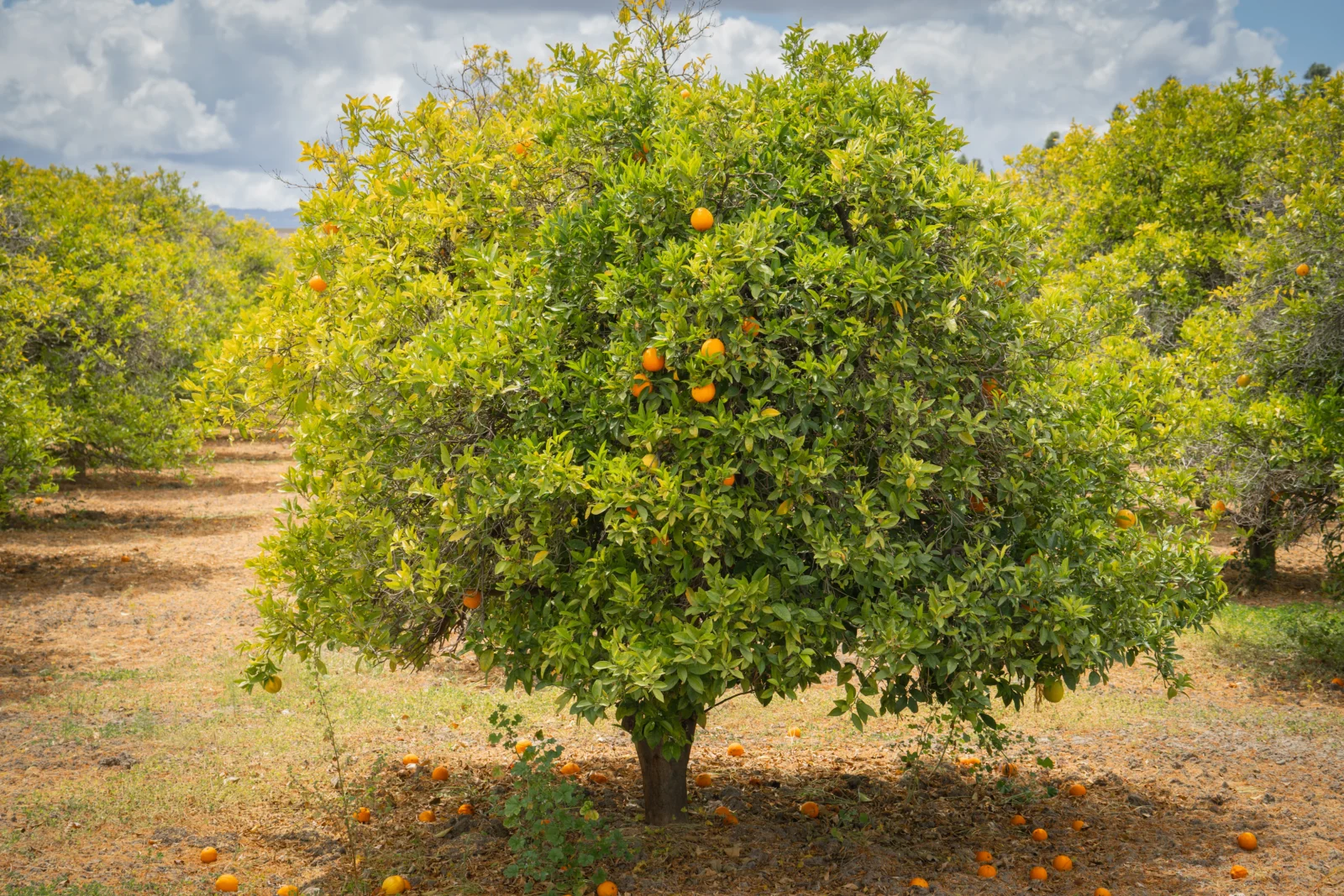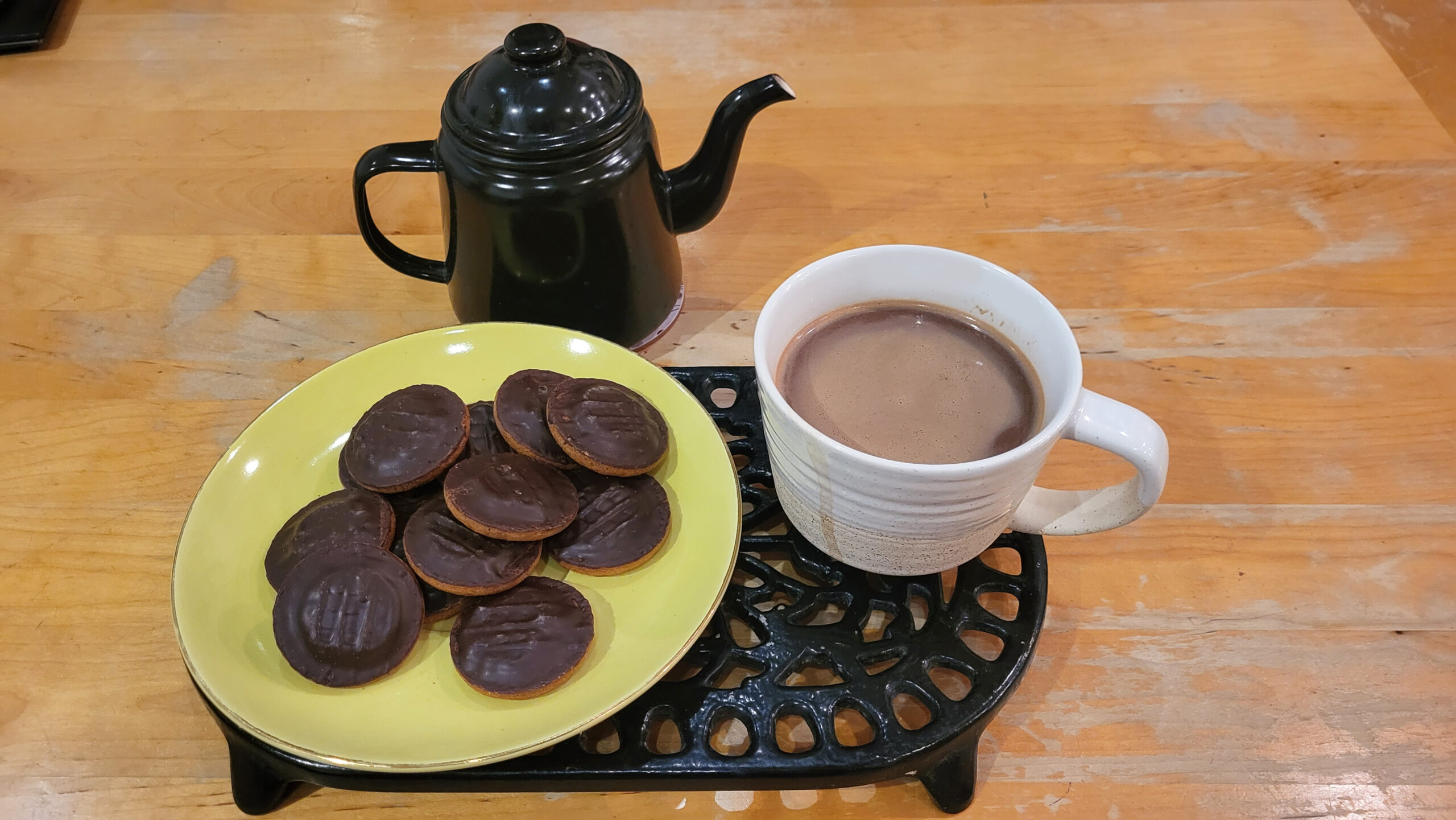The Jaffa Cake is one of Britain’s most loved treats, yet few of us know about the snack’s connection to Britain’s colonial history and the land from which they received their name; Hamza Shehryar explores more.
There is very little that unites the British Isles the way Jaffa Cakes do. Whether you live in the heart of central London or a small village in North Wales, whether you vote Labour or Conservative, chances are, there’s a pack or two of McVitie’s layered treats in your larder.
Since production began in 1927, McVitie’s most beloved conception, the Jaffa Cake – a pocket-watch-sized delight encompassing a layer of gooey and rich orange jam, sandwiched between a genoise sponge base and a chocolate coating – has become an indelible and enduring part of British culture. In 1991, Jaffa Cakes were at the core of a value-added-tax court case about whether they were cakes or biscuits. The tribunal decided that they were indeed cakes.
The UK’s endearment of these sweet treats is so pronounced that they have remained at the heart of public discourse for decades. In 1992, a Jaffa Cake-heavy diet played an instrumental role in Manchester United’s success, according to former player Brian McClair. In 2017, the public was collectively horrified at McVitie’s decision to reduce the number of cakes per package from 12 to 10. You would be hard-pressed to find any other snack that maintains such reverence across the country and beyond.
“While the orange became the symbol of the state of Israel, for Palestinians it symbolises the loss of their homeland and its destruction”
Eyal Sivan
Yet, the most significant characteristic of Jaffa Cakes, the colonial roots through which they came to be, remains mostly unexplored. While Jaffa Cakes bring swaths of people together in the UK, they have played an even more perceptible role in dividing communities over 3,000 miles away in what is now Israel and Palestine. In fact, McVitie’s chocolate-orange treat actually derives its name from the agrarian port city of Jaffa (Yaffa) in present-day Israel, which exported the oranges used in the cake.

Just six miles south of Tel-Aviv, Jaffa was the regional agricultural hub of the Ottoman Empire during the 19th century. Alongside citrons, lemons, and pomegranates, one of the most popular crops grown in Jaffa were Shamouti oranges, now simply referred to as Jaffa oranges. Records suggest that around ten million oranges – a figure exceeding the number of people living in London in 2023 – were exported annually during the late 1880s and that Jaffa was home to hundreds of orange gardens, each containing thousands of trees.
Underpinning the rapid growth of this industry was the thick skin of Jaffa oranges and their inherent lack of juice, which made them particularly suitable for export. These oranges found sizeable markets in England as well as Egypt and Austria-Hungary.
In 1881, when Alexander II, the Emperor of Russia, was assassinated, his killing was falsely attributed to a Jewish conspiracy. As a result, droves of Jews were forced out of Eastern Europe, with many resettling in the port city, making a living from cultivating Jaffa’s boundless gardens. Soon after, Jaffa became a rare example of harmonious and co-dependant collective habitation between Muslims, Christians, and Jews – but only for so long.

After the end of the First World War, the Ottoman Empire was dismantled and the British Empire took control of Jaffa. It drastically cut import costs for Jaffa oranges, making the fruit significantly cheaper for British people.
McVitie’s, then still a moderately sized bakery, seized upon a unique prospect. These oranges, with their trifling costs and intense flavour, allowed McVitie’s to launch a new product. One it decided to name after the very city which produced the gooey, iconic core that would come to underpin its newest product. The Jaffa Cake was born.
To many, this is an example of Britain’s rich and diverse history and the success of globalisation; however, some also see it as a perpetual reminder of the crimes and exploitation of the Empire, which reaped disproportionate profits from Palestinian labour. “The British were seeking nothing more than profits,” says Andrew Rose, who studied the British and Spanish Empires at Southern Methodist University and has written about colonial exploitation. “Essentially, the English were taking control over most of the revenue.”

In controlling exports of Jaffa oranges, the Empire channelled essentially all profits from the fruit, alongside other resources including scrap iron and petroleum, to the British economy, at the detriment of the farmers cultivating the crops, many of whom received a pittance of their labour.
In Overthrowing Geography, where historian Mark Levine investigates Jewish and Arab relations in Palestine, he writes that the Empire encouraged the immigration of Jewish people to Jaffa in the early 20th century, preferring their modernised cultivation methods to the “primitive” traditional methods deployed by Arab farmers, to maximise yields.
This resulted in communal and religious tensions, seeing the city change from a beacon of interdependence to a hostile, divided community. With the Jewish population enormously rising in Jaffa, the British and French Empires decided the city would go to the newly formed state of Israel during decolonisation, erasing generations of Jaffa’s Palestinian history.
Eyal Sivan, an Israeli filmmaker who directed the 2009 documentary Jaffa – The Orange’s Clockwork, a film in which he examines the Israeli-Palestinian conflict through the fruit, says: “While the orange became the symbol of the state of Israel, for Palestinians it symbolises the loss of their homeland and its destruction.” A reminder of the lasting impact of the Empire and decolonisation, which continues to be felt around the world.
